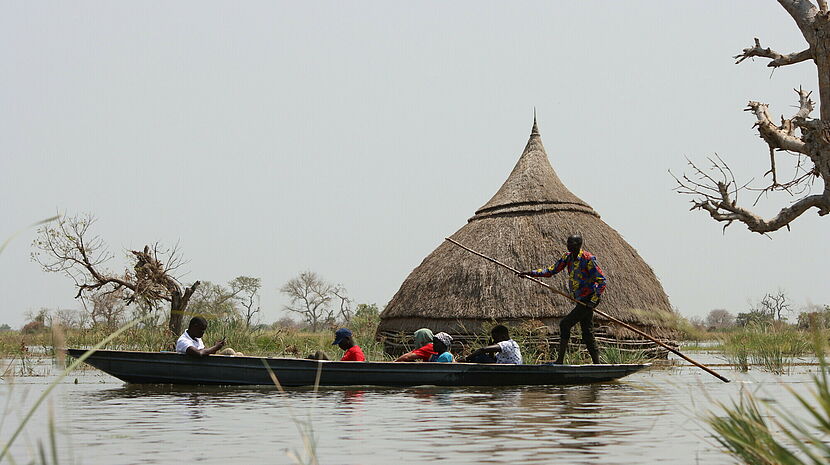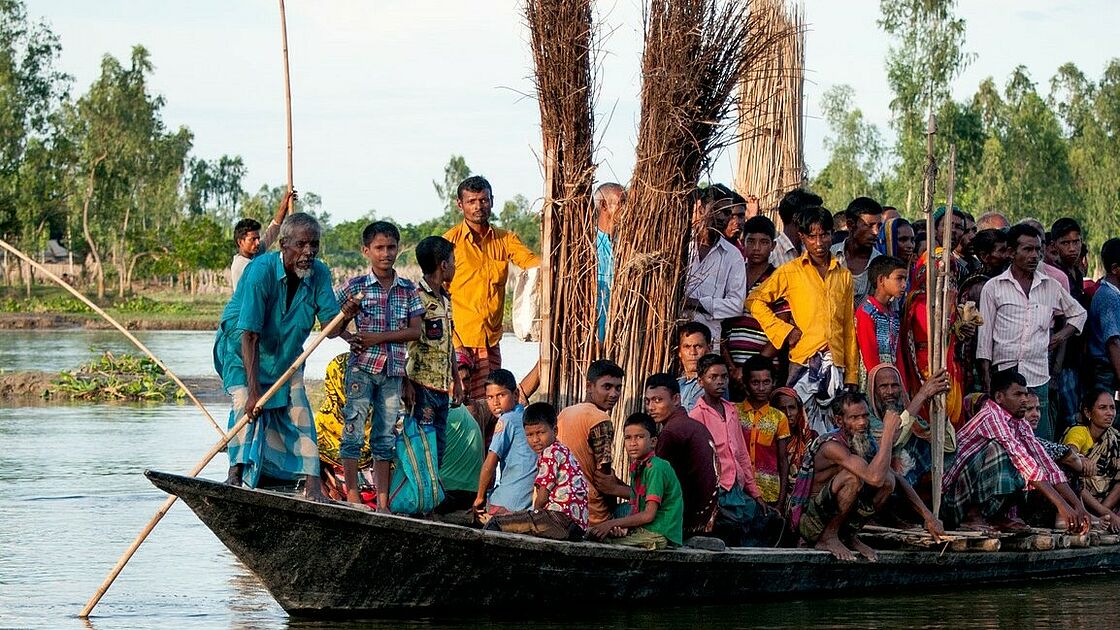Disability Inclusive Disaster Risk Reduction:
A New Lens on an Old Problem with the World Risk Report 2023

Bentiu, the capital of Unity State in South Sudan, has become an island surrounded by floods. All roads are impassable and only boats and the airstrip serve as lifelines for humanitarian aid to reach 460,000 people already displaced by a mix of flooding and conflict.
©CBM
The exclusion of persons with disabilities from disasters and humanitarian action is primarily due to limited human and financial resources, a focus on visible impairments over "invisible" impairments, and systemic problems such as stigma, discrimination and lack of adequate care.
When disaster strikes, headlines focus on the immediate rescue efforts, property damage and general chaos. But there is another story that often goes untold: the unique challenges faced by persons with disabilities. About 1.3 billion people have a disability, and 80 per cent of them live in developing countries, where most humanitarian crises occur. The World Risk Report 2023 also states that in places where disasters occur frequently, a lack of information can make a difficult situation worse. For example, after the 2015 earthquakes in Nepal, there were not enough places where persons with disabilities could get help because there was no good data. This can reinforce existing discrimination.
The Overlooked Challenges
People with disabilities are often socially and logistically isolated. They have difficulty accessing early warning systems, evacuation routes, transport, emergency shelter and essential medicines.
According to the United Nations Office for Disaster Risk Reduction (UNDRR), approximately 85 per cent of persons with disabilities have never participated in community disaster management and risk reduction processes.
The exclusion of persons with disabilities from disasters and humanitarian action is primarily due to limited human and financial resources, a focus on visible impairments over "invisible" impairments, and systemic problems such as stigma and discrimination.
73% of persons with disabilities would have difficulty evacuating in the event of a sudden-onset disaster. Only 21% could evacuate without difficulty and 6% would not be able to evacuate at all according to UNDRR (2014)
Countries such as the Philippines, Indonesia and India are particularly vulnerable to disasters. Marginalised groups such as women and persons with disabilities often bear the brunt of these disasters. For example, women were disproportionately affected in the severe earthquakes in Turkey in spring 2023. In order to make disaster management processes inclusive, capacity building of both mainstream actors and organisations of persons with disabilities is essential.

In August 2017, South Asian monsoon rains caused particularly severe flooding across much of the region. In Bangladesh, Gaibandha district, CBM and its partner Centre for Disability in Development (CDD) supported the affected population, including persons with disabilities, with unconditional grants and relief items.
CBM's Active Role in Addressing the Issue
CBM is actively bridging the gap between policy and practise in disability-inclusive disaster preparedness and humanitarian response. Through the multi-pronged "Leave No One Behind!" project, CBM is working with various partners to develop tailored training modules, online courses and applied research. This project, funded by the German Federal Foreign Office (GFFO), is more comprehensive than a general training module. It also promotes disability mainstreaming in humanitarian action through awareness raising and capacity development with targeted and tailored seminars or coaching sessions. These initiatives aim to build capacity not only within regular humanitarian organisations, but also among persons with disabilities and the organisations that represent them.
CBM's efforts also extend to technical assistance in countries such as Cameroon, with a focus on mainstreaming disability into humanitarian planning to ensure that interventions are implemented effectively.
A Call for Joint Action
The World Risk Report 2023 is a testament to CBM's commitment to this cause. Citing key frameworks such as the Sendai Framework on Disaster Risk Reduction and the Humanitarian Disability Charter, the report highlights the need for an inclusive approach at all stages of disaster response. The report calls for collective action to acknowledge unheard voices and achieve effective implementation of interventions to transform lives.